Our Blog - Alba, Italy
I don't know that I had ever hear of Alba, Italy before .... the closest I could come up with was the actress Jessica Alba (who to my knowledge has no linkage to the town). It it in the North-West part of Italy in the area known as the Piedmont. It is one of the main cities in the UNESCO World Heritage Site of Vineyard Landscape of Piedmont: Langhe-Roero and Monferrato, and is famous for white truffle and wine production. Like almost everything in Italy, it is very old, dating back before the Roman civilization. During the Roman times, it was the site of ancient Alba Pompeia, after given official recognition as a town by the Roman consul Gnaeus Pompeius Strabo while constructing a road from Aquae Statiellae (Acqui) to Augusta Taurinorum (Turin). Point of trivia: Alba was the birthplace of Publius Helvius Pertinax, who was briefly Roman emperor in 193.
The Duomo, or Cathedral, sits on the main square of the church. In the 5th century, the first structure was built here, and then a Romanesque church was built on its ruins. This church dates to the first half of the 12th century and is, like the previous church, Romanesque in design. The exterior still looks rather Romanesque but the interior has specific Gothic features. It is built like a large rectangle with side chapels sticking out. On the façade, you can still find instances of bulls (similar to Turin).

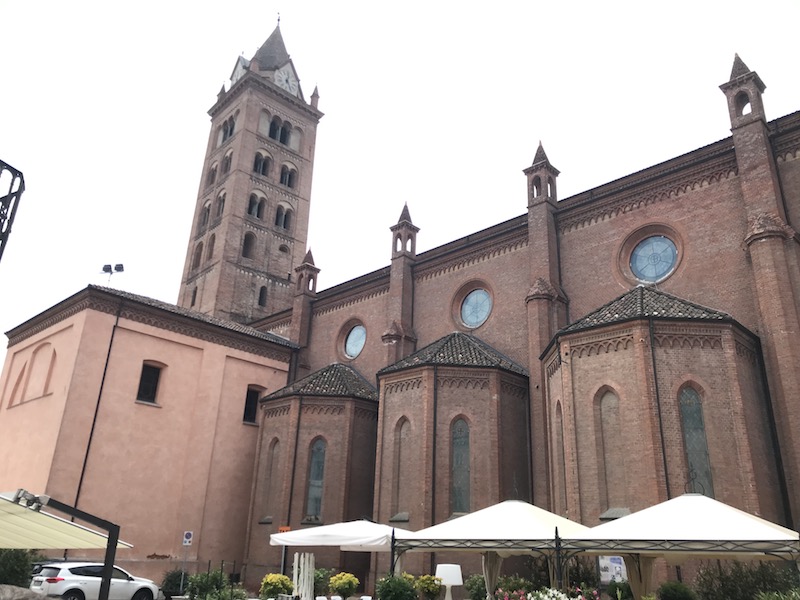

Here is where you can see the Gothic ribs and arches, with the vivid blue vaults and highly painted columns.


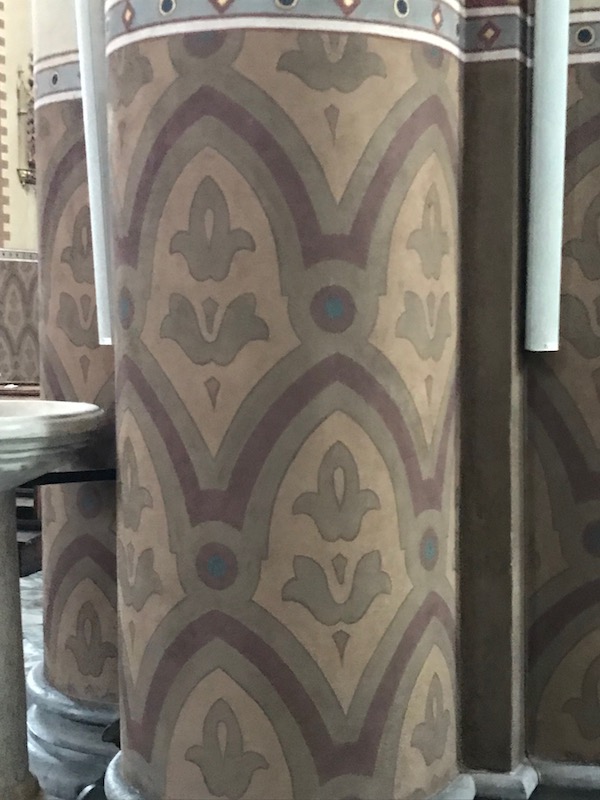
The Chapel of the Madonna of the Rosary contains a Neo-Gothic altar. The painting over the alter was done in 1888 by an artist from Turin.
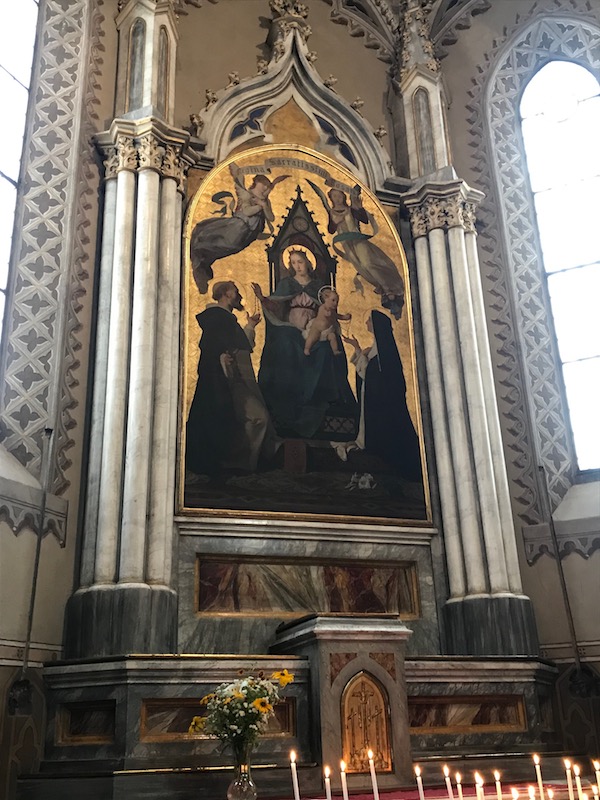
I seem to have forgotten to note what chapel this was, but it was the nicest (in my opinion). The altarpiece has these nice little statues at the top and the ceiling fresco is just amazing.

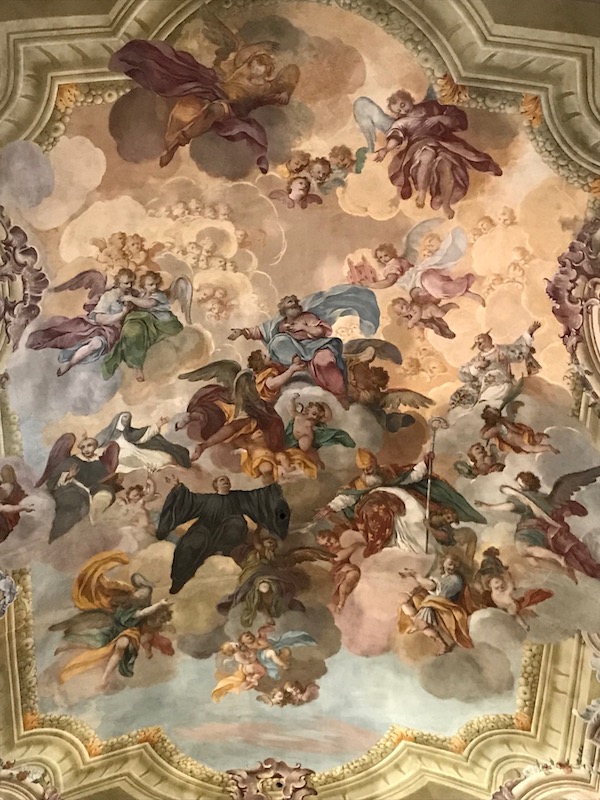
The high altar is Baroque and was made in 1712. While the pictures aren't very good, the walls are covered with monochrome frescoes with scenes from the life of San Lorenzo that were added in 1871.

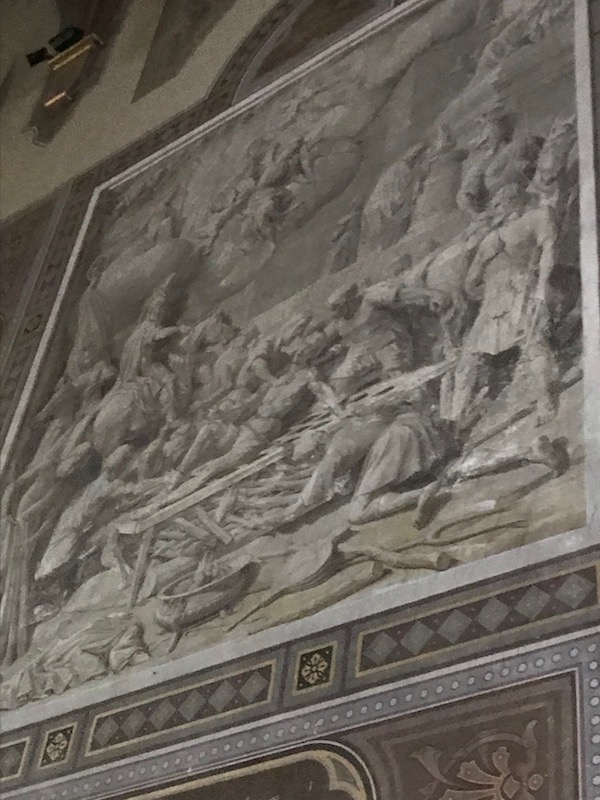
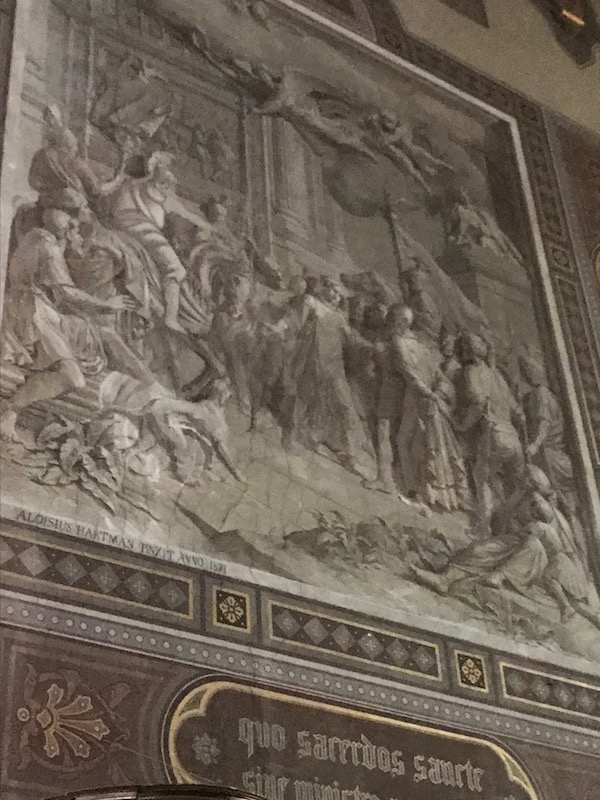
Saint John the Baptist's Church dates back to the 13th century and like several churches in town, the outside is very simple in nature. The inside, however, has lots of decoration.

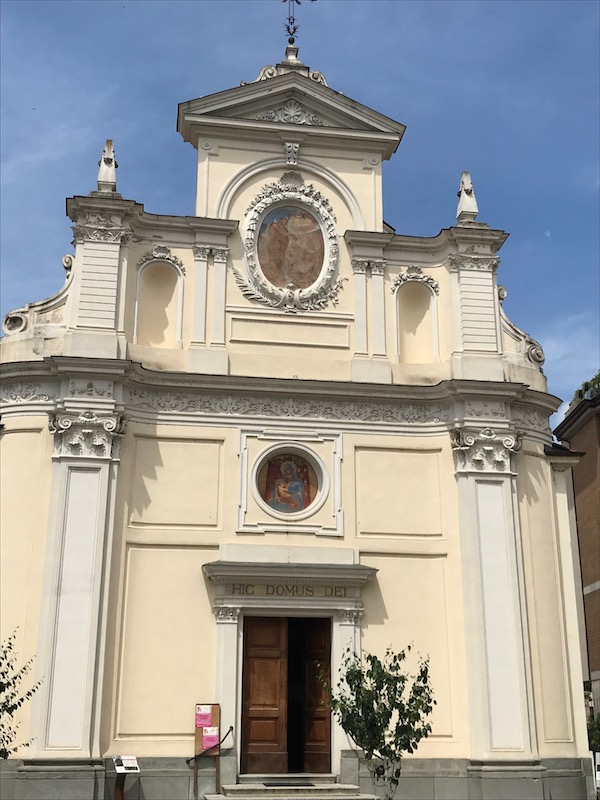
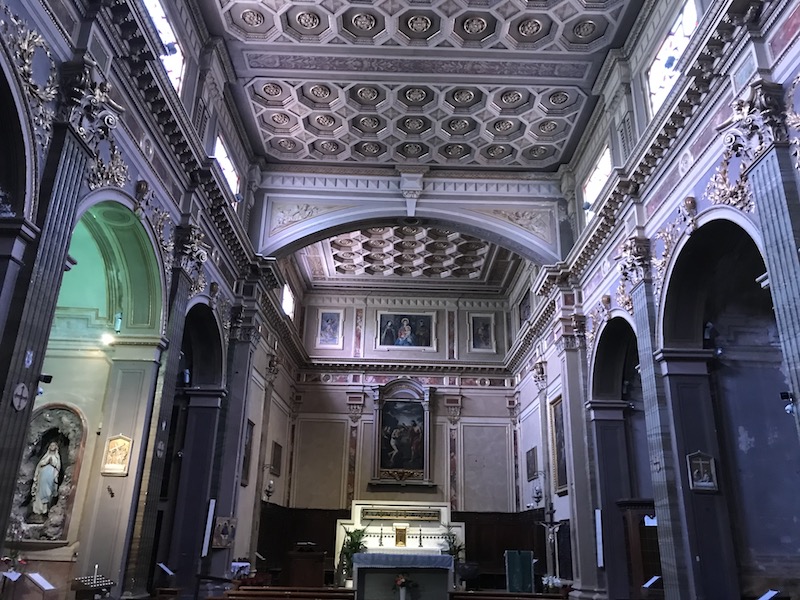
The side altar of Saint Augustine. The frame above the altar dates to the 16th century and is painted and gilded wood in a Late-Mannerist style. The painting within the frame shows the Madonna adoring the Child with Saint Joseph, Saint Nicholas of Tolentino, Saint Augustine, and Saint Jerome. Above can be seen music-playing angels and classical ruins are shown in the background.
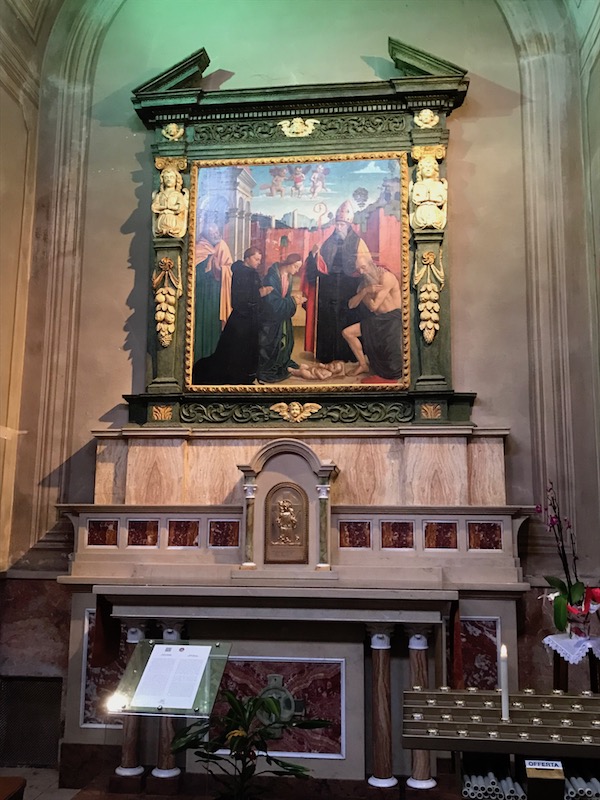

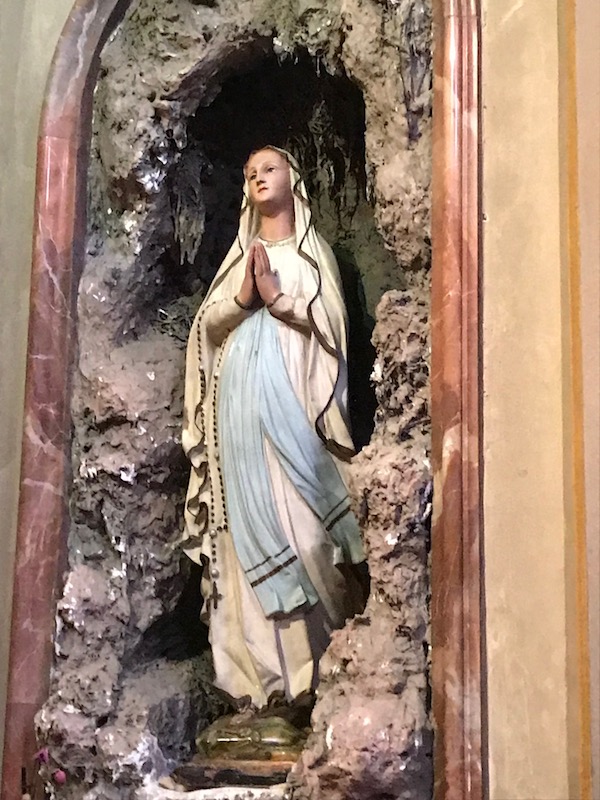
They also had this very nice statue of the Madonna.
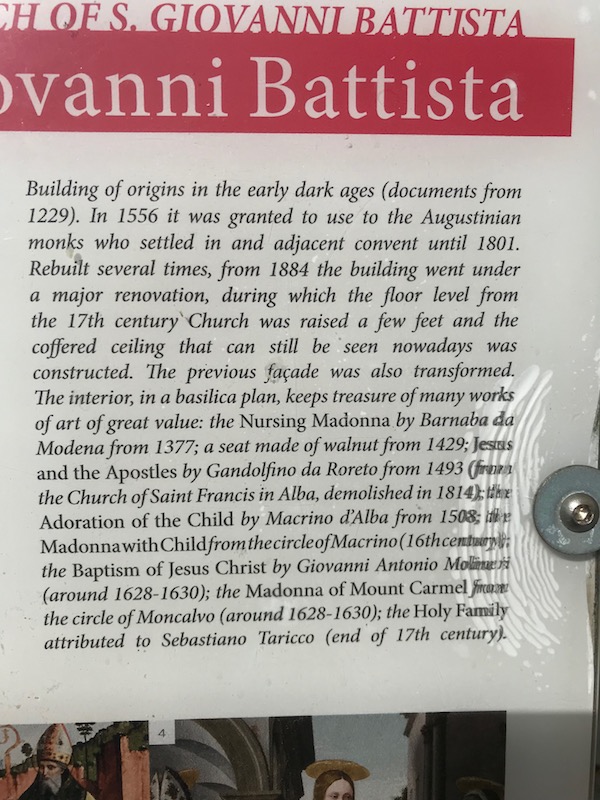
Just across from the church are the remains of a large Roman temple which dates back to between 27 BC and 14 AD, and abandoned in the 5th century. There is a drawing of what it would have looked like.

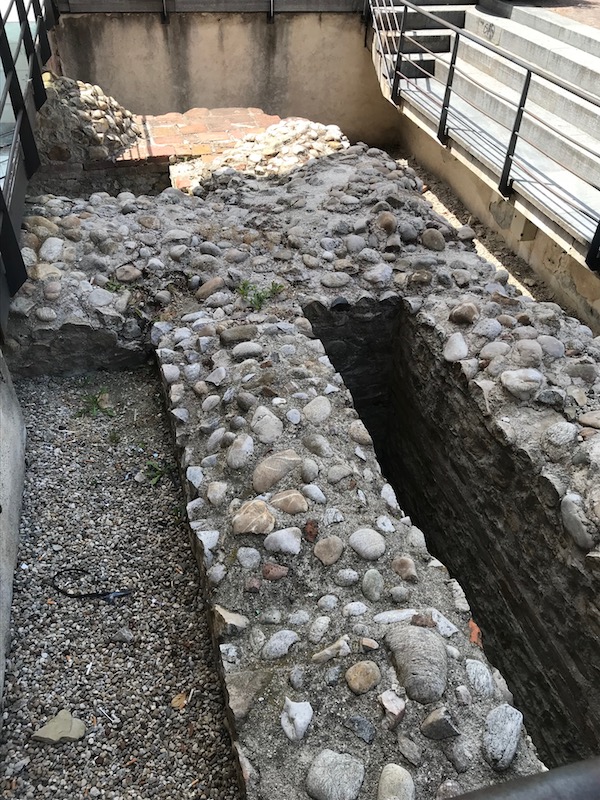

This is one of the remaining towers from the Middle Ages. Alba is sometimes called the "city of a hundred towers" although there aren't 100 now nor were there EVER 100 towers ... this was a generalization because there were lots and lots of towers. Most are gone, but there are a few still dotting the city.
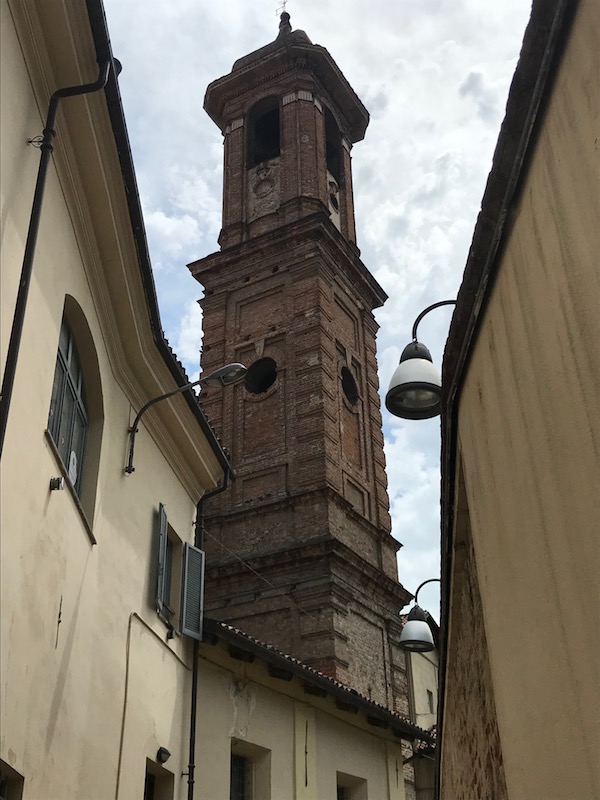
The Fontana house dates back to the 15th century and has retained some characteristics of late medieval mansions. On the façade you can see bands of decorative brickwork showing dancing jesters and fools.

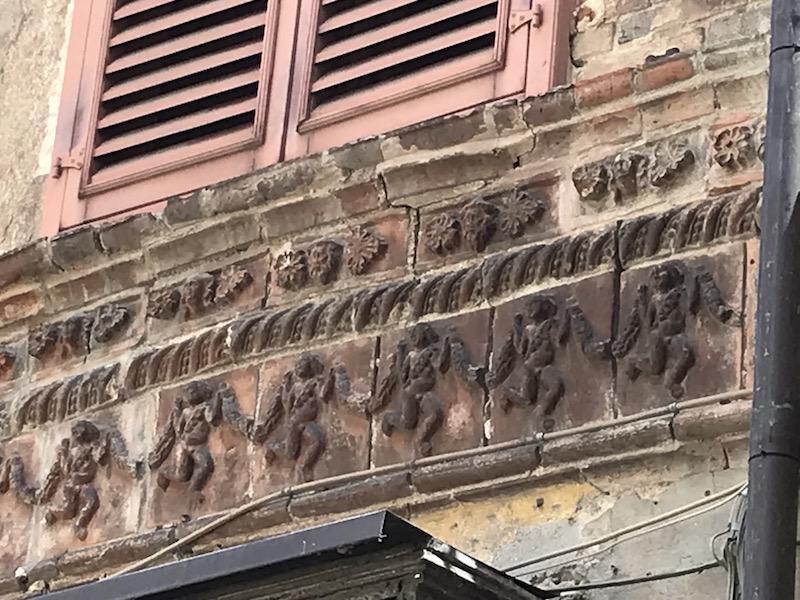
A couple other interesting architectural buildings ... the first has nice Renaissance arches with a column between a couple of the upper windows, and a different house that had some really interesting brickwork in the shape of Renaissance arches.
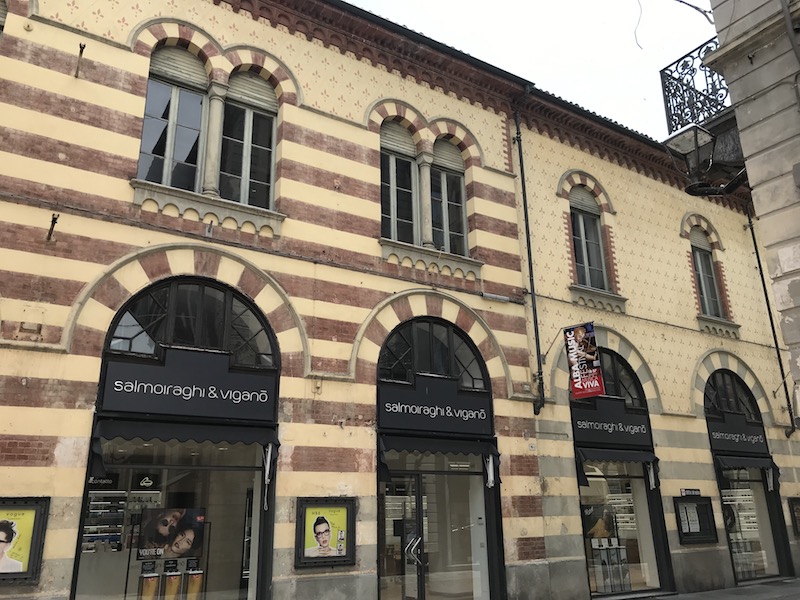

The Santa Maria Maddalena church was built at the beginning of the 1700's in a Baroque style. If you think it looks a little "rough" ... you would be right. The brick facade was never actually finished, but the pattern of concave and convex strips is characteristic of late-baroque architecture. And the bland exterior is a stark contrast to the refined and colorful interior.
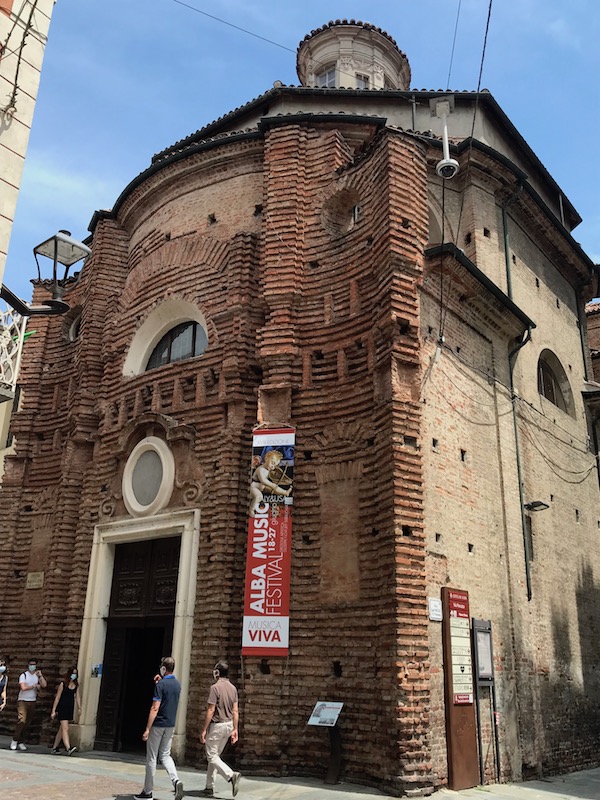
The Main altar is dedicated to Santa Maria Maddalena, who is shown in the oval altarpiece painted in 1825 by Giovanni Battista Biscarra.
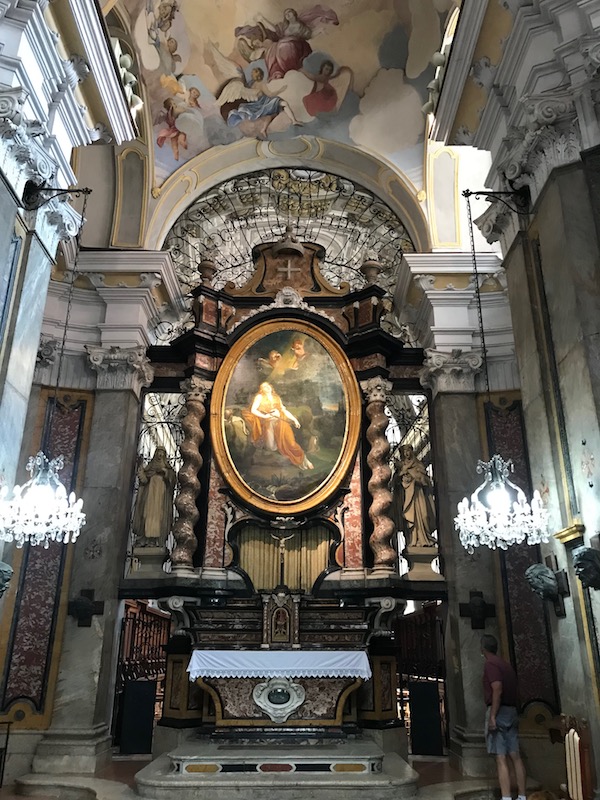
The frescoes in the dome depict the Exaltation of the Blessed Margherita of Savoy. She came to Alba in 1421 after the death of her husband, the Marquis Teodoro, determined to lead a monastic life according to St. Dominic's rules. Here, she founded a new Dominican monastery dedicated to St. Mary Magdalene. Her relics are supposedly in the ruin in one of the next two chapels.

And here is a great "study" into Trompe-l'œil ... comparing two altars in the same church. Check out the first one, with the marble corinthian columns around the large painting.
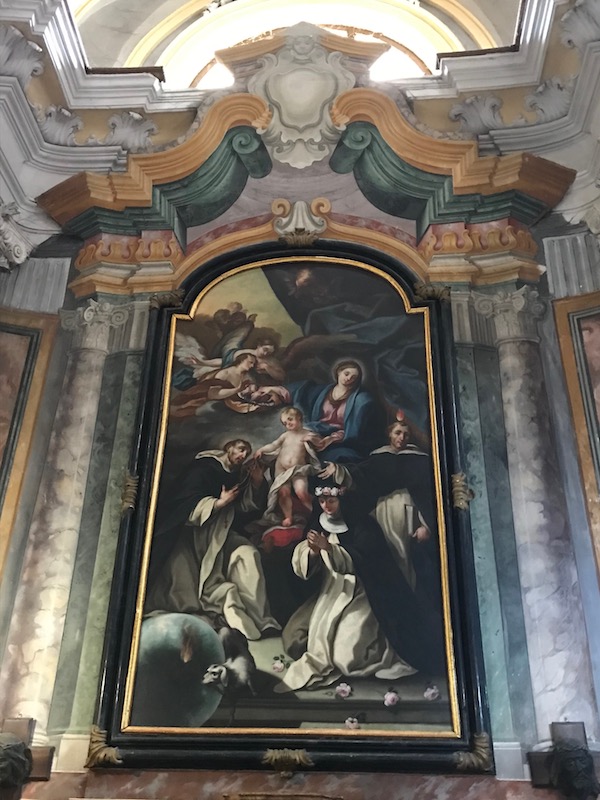
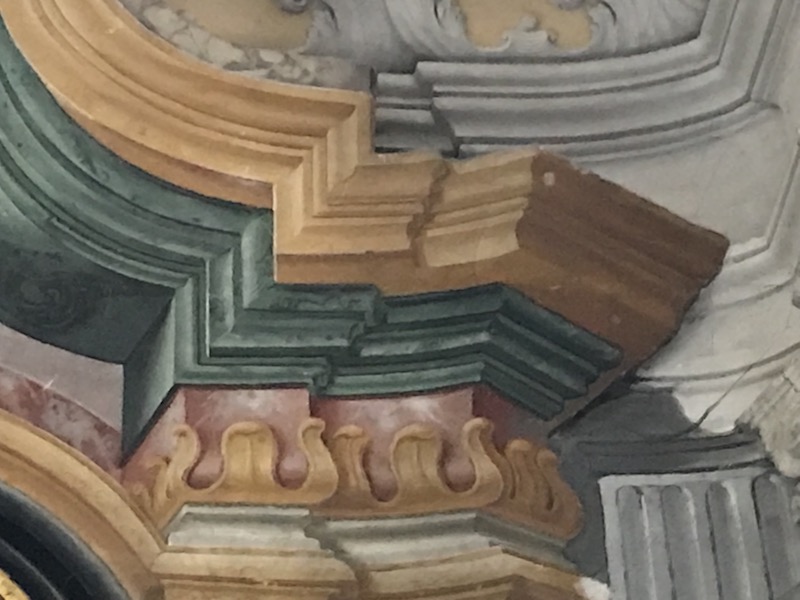
And now the 2nd (this is the one that in place of the large painting, it has the silver urn holding the relics of Margherita of Savoy. This one is "real" while the first one is the Trompe-l'œil, painted to mimic the marble columns and decoration of this one.
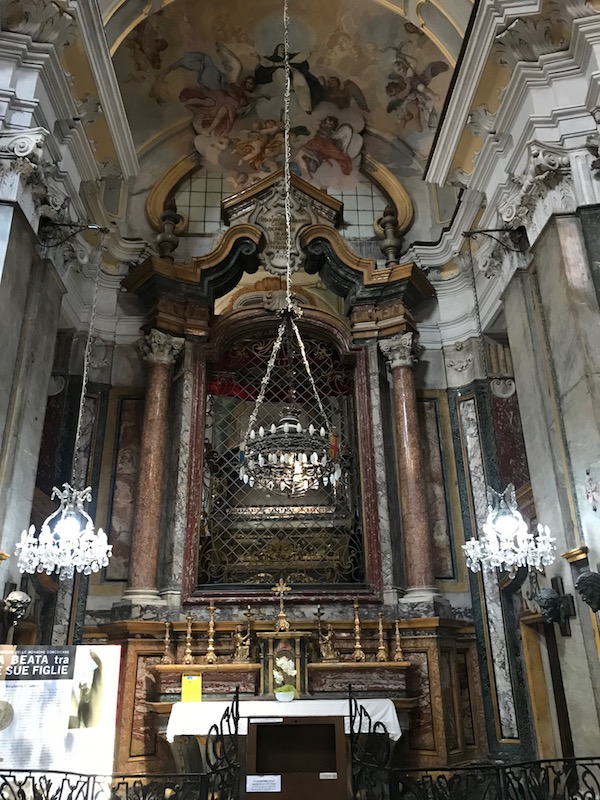
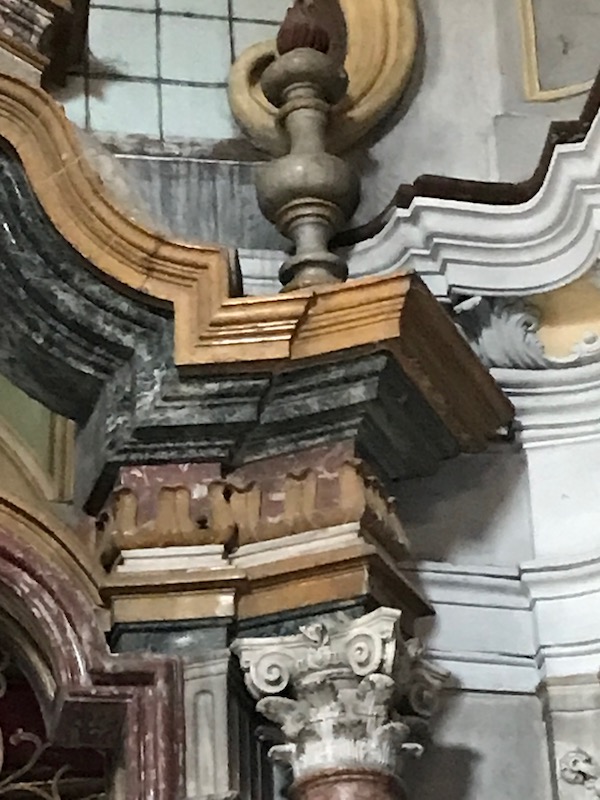
This closed-off area is the nuns chapel, for the Dominican monastery that was founded in 1448. While the ceiling here looks very ornate, it is actually all Trompe-l'œil. You can just get a little glimpse of the ancient carved wood choir stalls on the left side.

Another Roman street that we ran across just walking around. This is the major North-South road and there is a sew system trunk line underneath it. The majority of the road is made from river rocks. There is a straight center line of larger stones and cross-lines to mark off every 10 feet.
